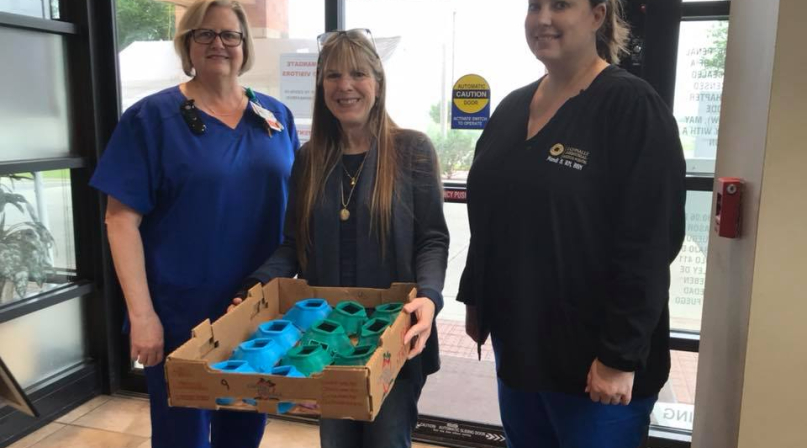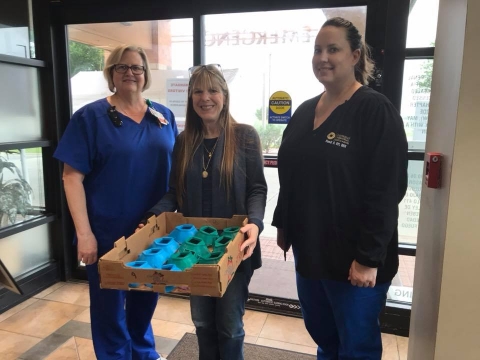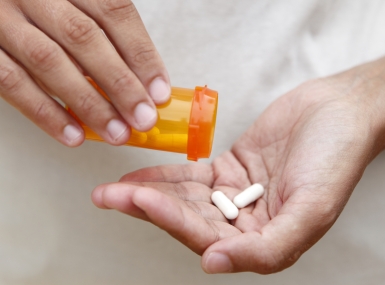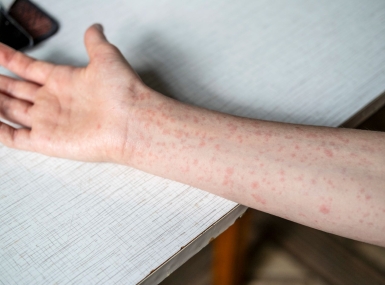Counties get creative to combat COVID-19 supply shortages
Author
Upcoming Events
Related News

Face masks, gloves, testing kits, gowns, cleaning supplies and hand sanitizers — the list goes on for supplies needed during the coronavirus pandemic.
In Montgomery County, Iowa, Emergency Management Director Brian Hamman said first responders, health care providers and long-term care facilities have been impacted by a shortage of personal protective equipment (PPE.)
“With a sudden surge of COVID patients nationwide, everyone is stepping up their preparedness and response activities,” he said. “This has created a shortage of all this PPE and it’s virtually impossible to get.”
The county had a small amount of equipment available immediately but has reached out for additional public and private donations, Hamman said.
“Now, we’re really focusing on those state assets,” he said.
The county has received multiple shipments of face masks, N95 masks, isolation gowns and gloves from the Iowa National Guard. As of April 2, the county had more than 10,000 gloves, more than 5,000 face masks/face shields, more than 200 gowns and 160 containers of cleaning wipes.
Hamman said the gowns and cleaning wipes are limited and they are unable to find any.
Nursing homes and other facilities that are now following stricter guidelines on patient care than before the outbreak are using more PPE than was ever planned, Hamman said.
“The numbers that they’re using, if they continue to rise, with what we request of the state assets or even through donation or even procuring those items ourselves if we can even find them, I don’t know that we are going to have enough if it comes to that point,” he said.
In other rural counties, such as Washakie County, Wyo., shortages also included testing kits.
At one point, the county had less than 20 for a population of 8,000, according to Washakie County Commissioner Terry Wolf. The county has since received more testing kits, but now faces shortages in lab capacities to run the tests, he said.
“When you have limited testing kits… we’ve probably had people out there who are positive we just don’t know about,” Wolf said.
Counties find innovative solutions to shortages
In Hamilton County, Tenn., the county partnered with a private high school to offer faster turnaround times on completed tests, Commissioner Tim Boyd said.
Lab instructors at Baylor, a private high school, and additional medical technicians created a testing procedure to obtain COVID-19 screening results within four hours. Prior to the partnership, Boyd said it took between 48 hours and seven days to receive results.
“Baylor took the initiative and said we’re not going to wait on the state or the government to help us with this lack of testing availability,” he said.
Hamilton County Commissioners unanimously voted to appropriate $1.5 million to run the lab for a 90-day period at 300 tests per day to cover the costs of personnel, supplies and the tests, according to Boyd. The lab on the campus is run by the Hamilton County Health Department.
“We’re always talking about how fast counties can react because we’re the boots on the ground,” he said. “Here’s a perfect example of Hamilton County taking the initiative to work on this health crisis and not wait on the state and federal help.”
The lab is licensed by the state and aims to help local hospitals and health care providers identify those infected with the coronavirus.
“The county officials and your local private enterprises need to be thinking out of the box so that they can help each other through this unprecedented health crisis and take the time and listen to those coming forward,” Boyd said.
In addition to partnering with schools, Anoka County, Minn. Commissioner Matt Look partnered with a local business.
Look was approached by an e-cigarette company that wanted to produce hand sanitizer. He worked privately with the company to find an ethanol plant that was willing to donate 660 gallons of ethanol. The ethanol was mixed with glycerol and distilled water from the e-cigarette company using a World Health Organization (WHO) recipe to make hand sanitizer.
“From a manufacturing standpoint, I think people are willing to help people and anytime you have that type of environment, you have creativity and that’s precisely what you need because you’re facing uncertainties,” he said.
During two distribution days at the county fairgrounds, over 700 cars arrived with drivers putting empty containers out their windows to be filled with the free hand sanitizer. Additionally, the sheriff’s departments, home healthcare workers and senior centers were requesting gallons of the hand sanitizer.
“It just represents the big need that is out there,” Look said. “It’s just one more weapon, if you will, in the toolbox in this war against the virus.”
A county library in Wilson County, Texas is using its own supplies to create PPE during the crisis. At the Sam Fore, Jr. Wilson County Public Library, librarians are using the facility’s 3D printer to create face masks.
Wilson County Public Libraries Computer Lab Manager Lesa McCall said she discovered Make the Masks, a website with a 3D-printable mask plan available for communities to produce.
According to McCall, the 3D printing is able to extend the lifespan of N95 masks by a factor of four by utilizing and replacing different pieces of the masks.
“That was our goal to take what limited supplies they have and extend them as much as possible,” she said.
McCall said they have delivered three dozen masks to the hospital and two emergency services districts and are working on printing more. She said the masks will be distributed to jails, funeral homes, the sheriff’s department, police departments and medical providers.
“We were hoping that we could get the word out and if everyone could do their little bit of printing, we would really just be able to extend these supplies exponentially,” she said.
For counties looking to track PPE usage, the Centers for Disease Control and Prevention has created a personal protective equipment burn rate calculator, a spreadsheet model which can be helpful for facilities to optimize the use of PPE. The tool calculates the average consumption rate and can be used to estimate the remaining supply of equipment.

Attachments
Related News

House passes SUPPORT Act reauthorization
On June 4, the U.S. House of Representatives passed the SUPPORT for Patients and Communities Reauthorization Act of 2025 (H.R. 2483) by a strong bipartisan vote of 366–57. The bill, which reauthorizes billions of dollars for critical programs that target overdose prevention, now heads to the Senate Committee on Health, Education, Labor and Pensions, where a version of the bill was overwhelmingly advanced with bipartisan support in the 118th Congress.

CMS increases oversight on states’ use of Medicaid funds for undocumented immigrants
On May 27, the Centers for Medicare & Medicaid Services (CMS) announced it is increasing federal oversight of state Medicaid programs to ensure compliance with federal law regarding the use of Medicaid funds for undocumented immigrants.

Measles on the rise: What county officials need to know
Vaccination is the most effective defense against measles, and county leaders can use their voices to encourage uptake of the MMR vaccine.
